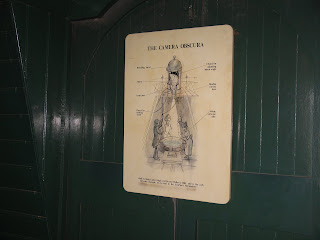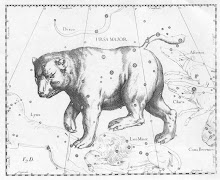Please excuse the delays in updating the blog... it's been an extremely hectic month already for Indiana Space Grant.
Earlier this month, I had the opportunity to attend an international conference on Organizational Design and Management at Rhodes University in Grahamstown, South Africa. Apart from my own travel woes, this was a wonderful conference highlighting a range of research in Human Factors and Ergonomics (my own research discipline) from around the world. After the end of the conference, I managed to do two "touristy" things after the end of the conference, but since you already know me to be a STEM geek, you can guess that there will be something about space involved.
Well, you'd be right. After the last conference session, several of the conference attenders gathered in the parking lot, and we were driven to the Pumba Game Reserve a few kilometers away for an afternoon / evening safari tour. Perfect weather, too: mostly clear skies, winds about 15 km/hr, temperature about 24C. (Yes, the rest of the world uses metric units. We should get used to it.) I took multiple pictures of the South African Big 5 (lion, elephant, cheetah, rhinoceros, water buffalo) and many antelope species in a large reserve, and even had dinner in a lodge that is not fenced off from the rest of the reserve. (We were not visited by any of the local residents, but it was very cool to understand that we could have been.) I did my dissertation research (group dynamics) on the organizational culture and human-environment interactions of park rangers, so even the part of the tour to listen to the rangers describe their experience of the reserve and the personalities of the animals was research-cool for me. I don't normally do natural science research, but clearly the study of ecologies and population dynamics and biodiversity are important areas of managing a game reserve.
But, after dinner, I got even more treats. Nightfall came quickly (there is also a bit of getting used to the concept that the sun is always in the north, rather than the south), and to look up in the Eastern Cape region north of Port Elizabeth was an experience I'd never had before, and already miss. There were so many stars I'd never seen before! Not only from the perspective of dark skies (it's hard to get a similar level of clarity and distance from light pollution anywhere in the eastern US), but also the moon phase (waxing crescent, not above the horizon so early in the evening). Of course, there were also many stars and constellations I'd never seen before, such as Crux, Puppis, and the Southern Triangle. The Milky Way was gorgeous, and even the familiar sight of Orion was new and different--Orion's belt high in the sky, as the constellation was setting early in the evening. (Of course--we in the Northern Hemisphere see Orion poking his head above the horizon during this time of year... watching him duck his head below the horizon was a considerably reorienting experience.)
Normally, I don't know all of this stuff. But, I had one of the most wonderful apps on my iPhone that helped me appreciate all of this. If you haven't seen it yet, find it and get it: Star Walk (available for iPhone, iPad, and even Android) is one of the best done tools for science education and reference I've seen. It's not just that I could look at a list of constellations. I could (once I allowed the iPhone to identify its position at roughly 33 deg S, 26 deg E) actually hold the iPhone up over my head, and it would show the star map and constellations right where I was looking! It was so cool, I had several other people come up and look at it as well. Way neat.
The next day, before leaving Grahamstown, I was able to visit the Galpin Observatory Museum, also home of the only Victorian Camera Obscura in the Southern Hemisphere. Henry Galpin was an amateur scientist (particularly astronomy and optics) of note, and he was both interested in stargazing and clocks (his main profession was watchmaking and chronometry).
So, without meaning to, I was able to link 19th Century astronomy to 21st Century astronomy, with the ability to see a very similar sky through new eyes. The camera obscura itself allowed me to also connect past to present and future: originally, the camera might have been used to locate Mr. Galpin, Dr. Atherstone, or others in the community. (We have apps for that now, too.)
Yes, it would be a very long trip to go to Grahamstown just to see this exhibit. But the point to me is, science technology and engineering are everywhere; mathematics is in everything; if you look and try to experience them, you can be enriched and educated and excited at any time.
With South Africa behind me, the next experience was a lot closer to home...
Periodic updates from the Director of the Indiana Space Grant Consortium, Prof. Barrett S. Caldwell
Subscribe to:
Post Comments (Atom)








No comments:
Post a Comment